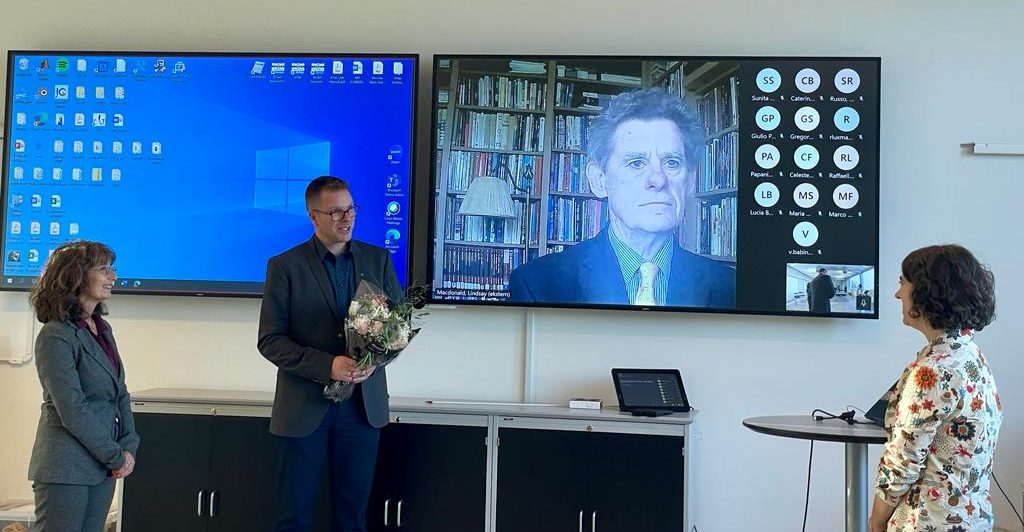Image: Agnese Babini (in the middle) with her supervisors Jon Hardeberg, Sony George, opponent Costanza Cucci and administrator Øyvind Ødegård (cred: Ine Gulbrandsen)
Agnese Babini has successfully defended her thesis!
We are very happy to announce that CHANGE ESR Agnese Babini has successfully defended her thesis titled: “Hyperspectral Imaging of Stained Glass” at NTNU – the Norwegian University of Science and Technology. Congratulations, dr. Agnese Babini!
Assessment Committee
1. Opponent: Dr. Costanza Cucci, Institute of Applied Physics, “Nello Carrara” (IFAC), Florence, Italy.
2. Opponent: Professor Lindsay W. MacDonald, University College London, London, UK.
Administrator/internal member: Dr. Øyvind Ødegård, Department of Archaeology and Cultural history, NTNU University Museum.
Supervisors
The doctoral work has been carried out at the Department of Computer Science, NTNU
Main supervisor: Professor Sony George, Department of Computer Science
Co-supervisors: Professor Jon Yngve Hardeberg and Dr. Tiziana Lombardo
Abstract of the Thesis
Since its first applications in cultural heritage, hyperspectral imaging (HSI) has become a valuable tool for documenting and analyzing many kinds of artworks, thanks to the possibility of obtaining spectral information regarding relatively large areas in a non-invasive way. In the last decades, HSI has been successfully used to study paintings on panels, canvas and plaster, manuscripts, and photographic materials, and has allowed for successfully characterizing the distribution of pigments and colorants in the artwork under study.
The work presented in this thesis focuses on evaluating the advantages and limitations of performing HSI on stained-glass windows. Compared to the abovementioned types of artworks, prior HSI applications on stained-glass windows are very limited due to the numerous challenges related to the optical properties of the glass and external factors that can negatively impact the quality of the image acquisition. For example, since stained-glass windows are mainly transparent, a setup for spectral transmittance measurements is necessary. If the stained glass windows are still part of a building and cannot be removed, the intensity of sunlight (used as the light source) can vary throughout the day, and the presence of vegetation or buildings in the background can affect the actual color of the glass. In addition, accessing the stained glass with the instrument could also be an issue if no support is available (e.g., scaffolding).
One of the research project’s main objectives is thus to propose new acquisition methodologies that allow for carrying out HSI of stained glass in different situations, from relatively small, detached panels, to stained-glass windows in situ. The characteristics of each setup will be thoroughly discussed to highlight advantages and limitations.
The second objective is to validate the data obtained from the proposed setups to demonstrate HSI’s capabilities in characterizing the materials used in stained glass. This validation process has been carried out from two perspectives; first, the correctness of the obtained spectra has been verified by comparing them with results from UV-VIS-NIR spectroscopy, which is extensively used for chromophore identification. Second, X-Ray fluorescence spectroscopy (XRF) has been used as a complementary analytical technique to determine the elemental composition of the glass and verify the presence of the chromophore identified by HSI.
Image analysis solutions for automatically identifying and mapping stained glass components were also explored. Besides the traditional classification methodologies, unsupervised unmixing approaches were also investigated, which showed promising results.



